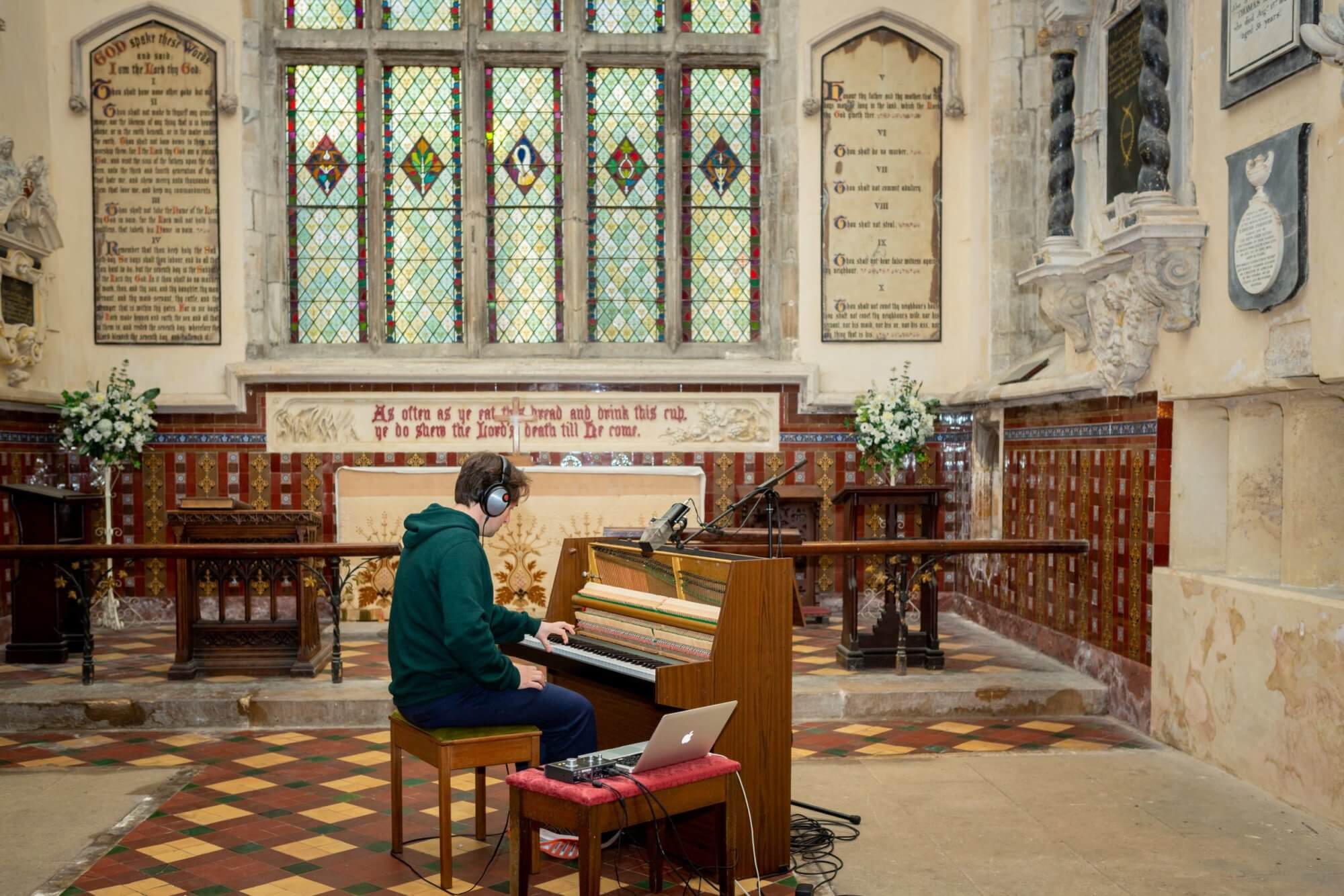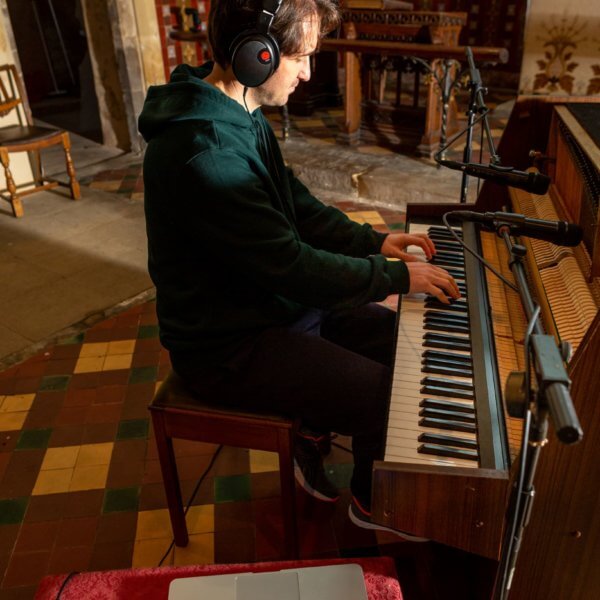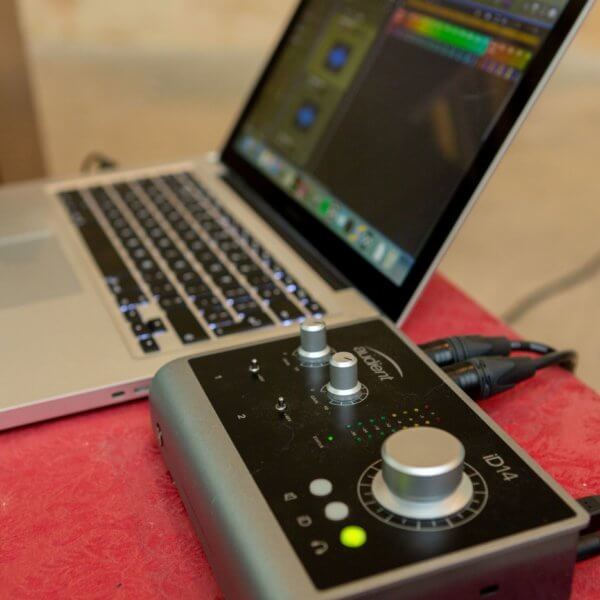Gloucester-based music producer, George Moorey likes to weave a little historical magic into his recordings, by taking his mobile setup – which now includes an Audient iD14 audio interface – into some of the ancient buildings of his adopted home. Capturing the spirit of the city in the form of samples, he showcases them in a surprising variety of genres including choral, classical, folk, hip-hop, electronica, grime and rock.
iD14: “Two quality pre-amps and converters…easy
to use physical controls”
One of his latest projects is a prolific songwriting collaboration with friend, fellow musician and lyricist, Shane Young, called The Powdered Earth. The first single, Hold Your Breath released on 31st January incorporates piano samples he’s been recording all around the city.
George explains, “Piano is crucial to the sound of The Powdered Earth. The parts are simple and repetitive, so I record them as MIDI using a master keyboard and a DAW. This makes it easier to edit and change the songs as they are developed. Using MIDI also means we can replace all the sounds, so I am collecting piano samples at every opportunity.”

Which is exactly what he’s been doing in this 12th century church (pictured left). “St Nicholas has an amazing, expansive natural reverb, but because it is in the city centre, it’s pretty difficult to get a quiet recording. There’s often the sound of conversations, cars, seagulls, sirens and other noises specific to the location. The cathedral bells pealing for example, or the occasional tipping out of hundreds of bottles from the pub next door. On the plus side, it does mean that my recordings and samples are far from generic!”
It’s here that he keeps his upright Opus pianino that he describes as “a little beauty.” George continues: “It’s a smaller piano with six octaves that Yamaha mass produced in the Kemble factory in the 1970s. In addition to having fewer keys, it has fewer strings than a regular upright piano: the notes in the upper register have just two strings each, rather than three. It’s a well-engineered instrument; it sounds gorgeous and really quite unique.”
Recorded and filmed in the chapter house of Gloucester Cathedral for the SPACES project
Describing the recording process, he says, “I use an Audient iD14. It’s perfect for the task. Two quality pre-amps and converters and easy to use physical controls and software interface. I can fit a MacBook, the iD14, a pair of headphones, a pair of microphones, a stereo microphone bar and cables into one easy to carry bag and, together with a microphone stand, it’s perfect for stereo recording and overdubbing on location.
“If there’s power available, I am able to use the iD14’s built in 48v phantom power with condenser microphones. If there’s no power, a pair of dynamic microphones are used and the iD14 can be powered via USB from the MacBook. This is something I’ve done a few times.”
Given the number of ancient Gloucester buildings he’s recorded in – the Cathedral, St Michael’s Tower, Blackfriars Dominican Priory and the Guildhall for example – it’s unsurprising that power is less accessible.
“For this particular session I also packed a second bag with a range of Sontronics microphones: 2 x STC1S, a Mk1 Apollo stereo ribbon microphone and 2 x SOLO dynamic microphones so that I could capture and share three different sets of stereo samples.”
For mobile recording: “iD14 is perfect for the task!”
So we have the setup, but how does he go about creating the samples? “Sampling a piano has been made really easy thanks to a specially designed, free to use Logic Pro template created by co-founder of Spitfire Audio, Christian Henson as part of his Pianobook project. Downloadable from the Pianobook website, it provides full details of how to create and organise a set of piano samples that can easily be imported into a software sampler like Logic Pro’s EXS24. Handy, as that’s what I use!
“All I have to do is set up my MacBook, connect it to the iD14, plug the microphones in, load up the Pianobook sampling template, set the headphones and microphone levels, hit record and play the piano notes according to the template.” Once he’s saved the session, he takes the recordings back to his project studio tucked away in his cellar at home, where he arranges and mixes them.
“Let The Sun Dance” features pianino sampled by George Moorey in St Nicholas church. Final version with singing/spoken words to be released later in 2020
He describes his fascination with ancient location recording as “a surreal and profound privilege to be able to tap into the rich seam of culture and history associated with these spaces through the centuries.”
Audient is delighted to hear the results – seagulls and all!


